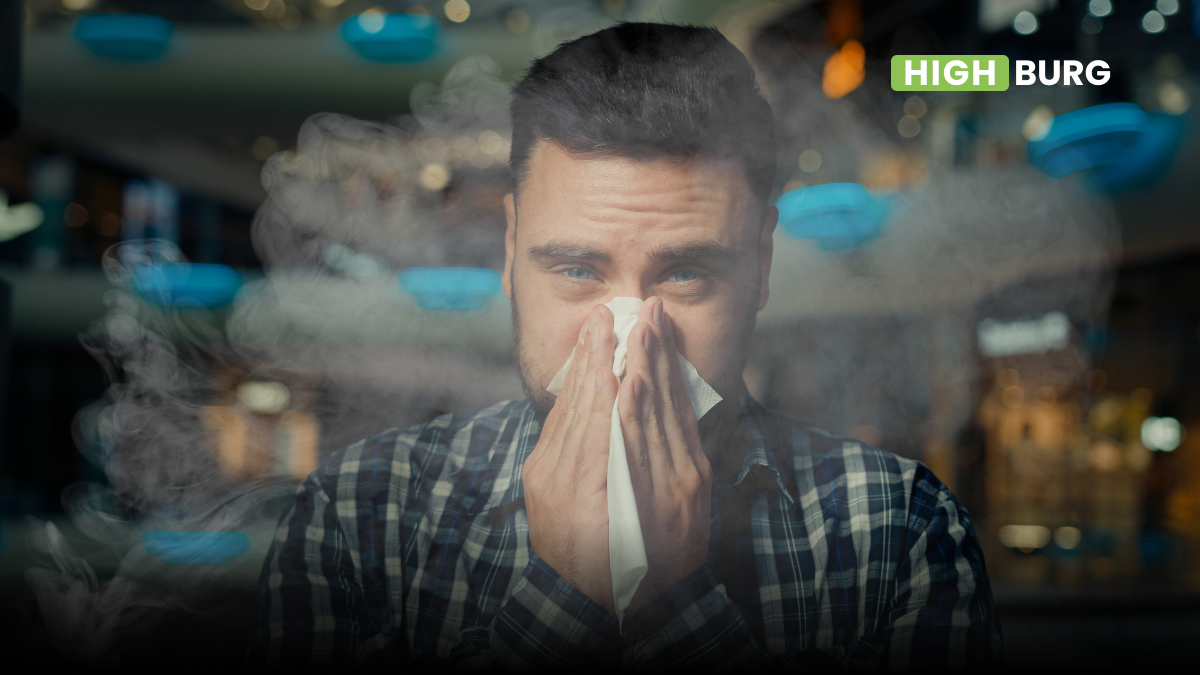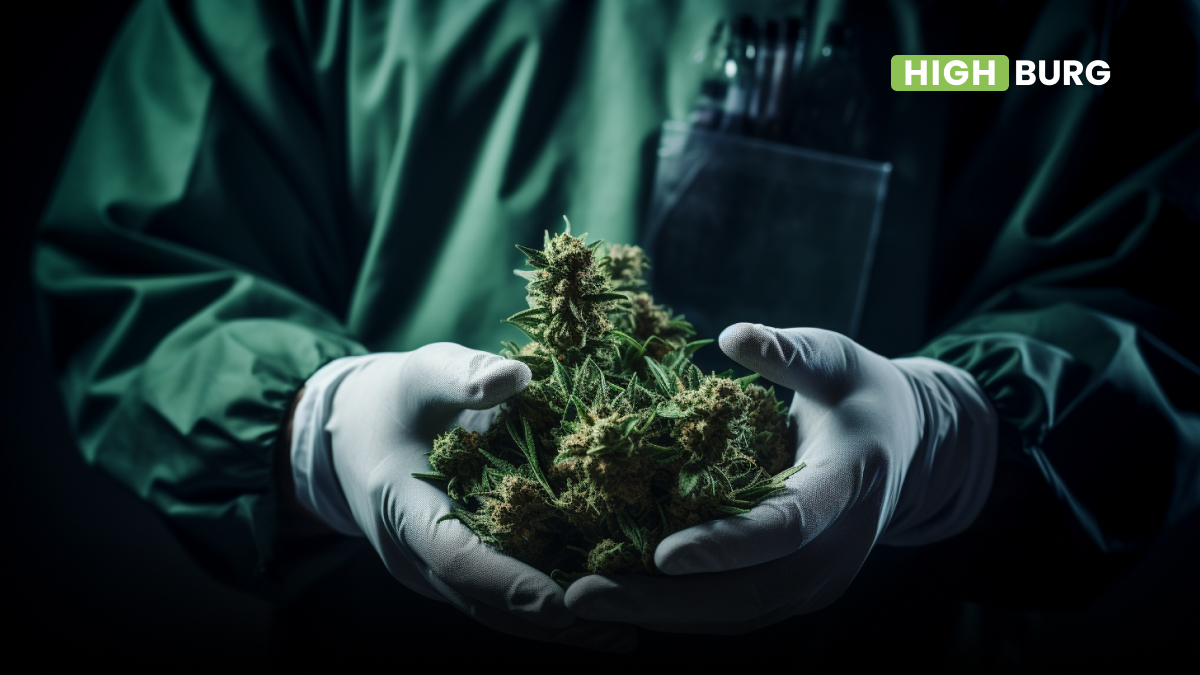An allergy is an abnormal response of our body to substances that may be harmful to one person, but harmless to others. The tissues and organs involved are the airways, skin, eyes, and nasal mucosa. Allergies can present as mild irritation or light nasal congestion or as more serious symptoms such as anaphylaxis, a potentially fatal allergic reaction. The symptoms are due to an immune reaction triggered by the interaction of allergens with antibodies. Among the most common allergens are foods such as peanuts, eggs, or shellfish, insect stings such as bees, wasps, or mosquitoes, contact allergens such as latex or nickel, but certainly among the allergens that affect the most people are those present in the air, such as animal hair, dust mites, molds, and pollen. But is it possible to be allergic to cannabis pollen?
Is it possible?
Throughout life, allergies of various types can develop, such as those to animal hair, certain types of food or materials, or plants. The same can happen with cannabis. Cannabis allergy is a rather rare condition whose symptoms usually appear in a mild form, but thanks to the less restrictive policies of recent times, an increase in cases can be noted. In some individuals the allergy can manifest itself with more serious symptoms such as anaphylactic shock.
Pollen is one of the most common allergens released into the air by plants. Cannabis also produces pollen, which can trigger allergic reactions. Cannabis pollen is among the finest and lightest, with a diameter ranging from 23 to 28 microns. This characteristic allows distribution over many miles, however increasing their irritating power. But it’s not just the cannabis pollen that triggers the allergic reaction. In fact, allergies can also occur with the inhalation of smoke, with direct contact with the plant and its flowers, through the use of materials derived from hemp, or with the ingestion of cannabis seeds or edibles. However, it is important to underline that episodes of allergic reactions can often occur even to substances that are not intrinsic to the plant. Just like inhaling pollen or smoke, mold can also trigger allergic reactions, and mold forms when the plant is not kept well or in an excessively humid place. Cannabis allergy symptoms.
Cannabis allergy symptoms can easily be confused with seasonal allergies or the common cold. The fastest method to dispel this doubt is to see if you are suffering from these symptoms after smoking, considering a period of time ranging from immediately after to an hour or more. In most cases, the symptoms are mild, but they can still prove to be very annoying. Here are some of the most common symptoms:
Redness and itching
Contact between the skin and cannabis can trigger a reaction on the skin; in mild cases, it manifests itself as a simple itchy redness. In severe cases, a rash or even hives may develop. Although contact is often the main cause of these rashes, even inhaling smoke or ingesting edibles can cause these symptoms, so don’t ignore the hypothesis of an allergic reaction just because you haven’t come into contact with the plant. The itching and redness are often localized in the area where the plant has come into contact, while in the case of reddening of the skin resulting from the inhalation of smoke or the ingestion of edibles, the redness could manifest itself more widely.
Tearing
A symptom common to many types of pollen allergic reactions. Proximity to pollen can cause excessive tearing in an allergic person, along with stuffy noses and sneezing. Symptoms that can be confused with hay fever. Even if the symptoms are mild, they can get worse if the right precautions are not taken.
Dry SkinDry skin can be another symptom of a cannabis allergy. Lips and eyelids are often the first parts of our body to dry out in cases of allergic reactions. In the most severe cases, scaly patches that are painful to the touch may form.
Nausea
Usually, when you ingest a substance to which you are allergic, you feel nauseous; this also happens in the case of an allergy to cannabinoids. The effects of ingested cannabis come into action more slowly with digestion, and this is why sometimes it seems difficult to connect nausea to the ingestion of a substance to which we are allergic. Sometimes, also thanks to the lack of lucidity, we can also confuse the cause of nausea with too high a dose. It may happen that if we ingest psychoactive substances on an empty stomach, we can feel nauseous, but if it happens every time we ingest cannabis, then it’s probably allergy symptoms.
Sore throat
Allergies caused by pollen are among those that cause the most discomfort in the respiratory tract, and cannabis is no different. As we said before, cannabis pollen is among the lightest and finest and can spread for miles around. When the male begins to spread pollen to fertilize the females, you may experience a slight throat irritation and a stuffy nose. The best solution is to use an antihistamine. It is also good to remember that ingesting cannabis and inhaling smoke can also cause irritation to the throat.
Anaphylaxis
It is a particularly violent reaction to an allergen. The symptoms are generalized swelling, constriction of the respiratory tracts, heart and cardiorespiratory failure, and, in the worst cases, death. This can happen if you are particularly allergic to a substance. Cases of cannabis allergy are rare, and it is very likely that there has never been a case of cannabis-triggered anaphylaxis, but like any other allergen, the intensity of the reaction can vary over the course of a lifetime.
Cross-reactivity
As already mentioned, the cases of allergy to cannabis are relatively low, but with ever more widespread legalization and the consequent increase in use all over the world, it is normal that there have been more cases. It has been found that people who develop an allergy to cannabis are likely to already have a pre-existing food allergy. If you are allergic to any of the following foods, you are likely to develop a cannabis allergy:
- Tomatoes
- Bananas
- Peaches
- Chestnuts
- Apples
- Almonds
- Eggplant
- Grapefruit
These foods have similar allergenic properties to cannabis, potentially causing so-called cross-reactivity,
a situation in which an allergic reaction to one substance also triggers an allergic reaction to another substance.
In conclusion, what can we do to alleviate cannabis allergy symptoms? If you work closely with cannabis, gloves and a protective mask are certainly appropriate. In the case of recreational use, trying cannabis with a low tetrahydrocannabinol (THC) content is recommended in order to understand if the allergy is due more to the pollen itself than to the active ingredient. A classic antihistamine can certainly relieve the symptoms, but if they are severe, we advise you to stop using cannabis and go to a doctor.



